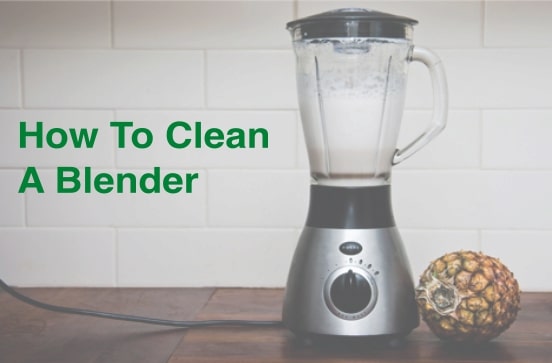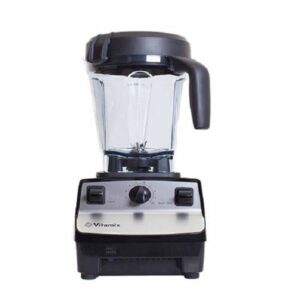Let’s be honest, nobody likes cleaning the blender after using it. Whether you are blending a sauce or just stirring up a smoothie, cleaning it can be a nightmare. Here are some of the most useful tips on how to clean a blender.
Self-Cleaning Functions
Self-cleaning features can be a lifesaver when it comes to cleaning the blender. Such features assist you to easily clean up the blender with a simple press of a button.
With the self-cleaning features, you do not need to risk reaching out to clean the sharp blades on the bottom of the container. Even if you are using oil, butter, or protein powders where it is in a sticky state, the self-cleaning mode can help with most of the cleaning task.
To use the self-cleaning feature:-
- Remove the lid and fill half the pitcher with warm water.
- Add a few drops of dishwashing soap and close the lid.
- Secure it properly and switch on the blender.
- Press the ‘Clean’ button to let the blender do its job.
- Once the cleaning cycle is complete, the blender will stop.
- Remove the lid and the pitcher and rinse it thoroughly.
- Air-dry the pitcher before using it again.
Some of the blenders from popular brands such as Ninja, Vitamix, and Blendtec come with blenders easy-clean features. While most Nutribullet models don’t have the auto-clean features, you may still use the pulse or variable speed to mimic the self-cleaning features.
Dishwasher Safe Cleaning
Not sure if you can put your blender in the dishwasher?
The first step is to read the instruction manual to find out if your blender is dishwasher-safe. Usually, stainless steel is safe to go into the dishwasher. Glass blenders can go in only if they have the dishwasher-safe mark. Plastic cups and lids usually cannot tolerate high temperatures of the dishwasher and should only be used if they are high-grade, BPA-free. Otherwise, they will melt and release toxic chemicals.
For example, the Ninja SmartScreen Blender or the Ninja Nutri Professional Personal Blender is dishwasher safe. Brands like Braun and Nutribullet specify that all the containers and lids of their models can go into the dishwasher. However, blenders from Kambrook are usually not dishwasher-safe. Even Vitamix blenders, such as the Vitamix 5200 should not be put inside a dishwasher. Only the Vitamix S-Series is dishwasher-safe.
However, it is only the jar that you can put into the dishwasher without the blades. Follow these steps:-
- Disassemble the parts by removing the lid, jar, and blades.
- You can soak the dishwasher-safe parts of the blender in soapy water first before putting them in the dishwasher.
- Put the lids on the top rack while the cups and jars on the lower rack of the dishwasher.
- Rinse the blades by dipping them separately in soapy water and wiping them with a soft sponge.
- After the jar and the lid is clean, wipe them with a soft cloth. Let it dry completely before your next blend.
Manual Cleaning With Dish Soap
Manual cleaning will be the last option.
- Fill the blender jar with warm water and add a few tablespoons of dishwashing detergent.
- Let this soapy solution stand for a few hours inside the stained container.
- Throw away half of the solution and use a sponge brush to scrub the sides of the jar well for a few minutes. It will help to scrape off the stuck food particles from the blades.
- Rinse the jar thoroughly and let it dry.
Alternatively, you can fill up the container at the halfway mark with water, put a few drops of dishwashing soap, secure the lid and turn on the power for 20 to 30 seconds.
Run the blender at high speed during this time to clean some of the toughest corners of the container where seeds and food particles might be stuck.
Empty the soapy water into the sink and rinse the jar thoroughly. Be careful to rinse all the detergent before letting the jar dry completely.
Stubborn Stains
Even if you choose the best blender brands like Vitamix or Blendtec, you will soon see stains and smells. Plastic jars are more susceptible to stains than glass. Stains might occur over repeated blending or might be caused by colors from foods and fats from oils and butters cause stubborn stains and odors. Here are two quick ways to remove stubborn stains:-
Lemon and Baking Soda
Baking soda and lemon are the best combinations to remove any stain.
- Pour some lemon juice into the stained jar and add 2 teaspoons of baking soda.
- Add a cup of warm water to the blender jar.
- Run it on high speed for 20 to 30 seconds or press the auto-clean button.
- Rinse the jar well and let it dry.
The lemon juice will take away both the stain and the odors.
Vinegar and Baking Soda
If you run out of lemons, you can use vinegar instead.
Mix three-fourth cup of vinegar with one-fourth cup of baking soda. Add one-fourth cup of warm water and pour the solution into the blender jar. The rest of the process is the same.
Vinegar is useful in removing the hardest stains from curries and sauces. Turmeric and oils leave stubborn stains inside the container. Vinegar and baking soda can completely remove such ugly stains making the container look cloudy. It can also get rid of the garlic and onion odors.
Use Hot Or Cold Water?
Cold water works for basic cleaning but will not leave it sparkling clean as hot water does. Hot water is good for removing the greasy, oily stains and bacteria.
Hot water is better for cleaning the blender as it removes the stains and kills the trapped bacteria. However, it is best to use warm water rather than boiling water, which can be dangerous. You can use the warm water along with dishwashing soap and vinegar both for manual cleaning or while using the self-cleaning features.
A blender is one of the most used appliances in the kitchen. Yet, it remains the hardest to clean for many people. Choose an advanced self-cleaning blender for your kitchen to ease the job, or follow these helpful tips on to clean your blender.

